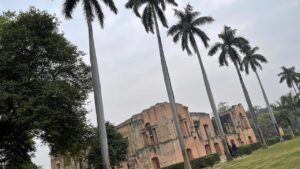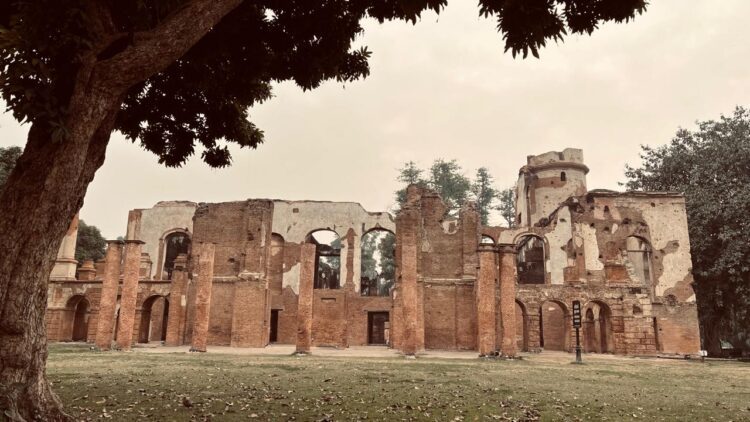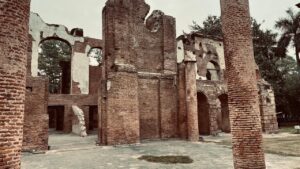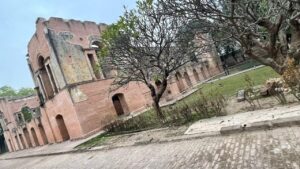The Residency in Lucknow is a significant historical monument that holds great importance in the context of India’s colonial past and the 1857 Revolt (also known as the First War of Indian Independence). Located in the heart of Lucknow, the capital of Uttar Pradesh, the Residency is a complex of buildings that was originally built by the British East India Company. Today, it stands as a symbol of the struggle between British colonial forces and Indian insurgents during the rebellion, showcasing the resilience and valor of those involved in the conflict.
The Residency was originally constructed in the late 18th century as a residence for the British Resident (a diplomat of the East India Company) to the court of the Nawab of Oudh (now Lucknow). It was designed as a large and luxurious complex, including living quarters, a chapel, a mosque, and a cemetery. The British Resident, Sir Henry Lawrence, played a pivotal role in the building’s history, as he was the key figure during the Siege of Lucknow in 1857.
The Residency became the focal point during the Indian Rebellion of 1857 when the Indian soldiers and civilians, led by the Indian rulers and military leaders, rose against British rule. It was here that the British forces were besieged for several months, with Sir Henry Lawrence and his men bravely defending the compound against the overwhelming forces of the rebels. The siege began in May 1857 and lasted until November of the same year. During this time, the British defenders faced constant attacks, but despite being heavily outnumbered, they managed to hold their ground for a long period.
The Residency complex is spread over a vast area and includes several buildings, ruins, and structures, each with its own historical significance. The main buildings include the residency building itself, a chapel, a mosque, a battlement, and the remains of a number of barracks and rooms that were used by the British personnel. The architectural style is a mix of colonial and Indian influences, typical of the period, with large verandas, arched windows, and spacious halls.
PC: Rajib Mukharjee
One of the most notable features of the Residency is the “Clock Tower” that stands as a silent witness to the events of the siege. The tower is a symbol of the resilience of the British defenders. The structure is also famous for its ruins, as many buildings were severely damaged during the siege and have never been rebuilt, adding to the poignant atmosphere of the place. Visitors can see bullet marks on the walls and cannonball scars on the remnants of the buildings.
A significant aspect of the Residency is its well-maintained gardens and the remains of the moat that once surrounded the Residency to provide defense. The site also contains several memorials and graves, including that of Sir Henry Lawrence, who died during the siege.
The Residency is most famous for its role during the Siege of Lucknow. As the rebels surrounded the compound, the British forces faced shortages of food, water, and ammunition, but they held out until reinforcements from the British army managed to break the siege. The siege lasted for over five months, and during this time, many lives were lost on both sides.
PC: Rajib Mukharjee
The defense of the Residency became a symbol of British resolve and the brutality of the conflict. On the Indian side, it was seen as a symbol of resistance against colonial oppression. The British garrison’s ability to survive the prolonged siege is remembered as a testament to their courage and determination. On the other hand, for the Indian freedom fighters, the prolonged siege and the eventual victory marked a significant chapter in the fight for independence.
Today, the Residency is a protected monument managed by the Archaeological Survey of India (ASI) and attracts visitors from around the world. It is an important site for those interested in Indian history, particularly the 1857 uprising, as it offers a glimpse into the period’s violent and tumultuous nature.
The Residency is also a reminder of the complex relationship between India and its colonial past. As a site of intense historical significance, it provides valuable insights into the lives of the British and the Indian resistance forces. It serves as a place for reflection on the costs of the struggle for freedom, and it is a testament to the sacrifices made by both sides during the revolt.
In addition to its historical importance, the Residency’s peaceful surroundings and beautiful gardens offer a stark contrast to the violent history that unfolded here, providing a poignant and somber space for contemplation.
The Residency in Lucknow stands as a monument of enduring historical importance. It not only symbolizes the turbulent days of the 1857 revolt but also serves as a significant reminder of the impact of British colonial rule in India. Today, the site continues to be a valuable educational resource and a somber memorial to the past, attracting visitors from all corners of the world who come to learn, reflect, and honor the bravery of those who lived and fought here.



















